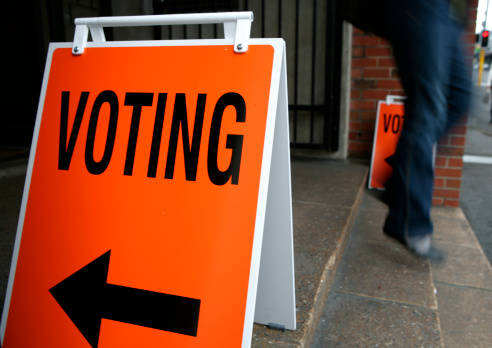
A recent GAO report investigates how ID requirements impact voter turnout.
As election season nears, citizens in many states will not be allowed to vote without providing some form of identification at the polls. Within the last several years, more than half the states have enacted stricter identification requirements for registering and voting. These voter identification laws spark controversy. Supporters assert that the laws help prevent voter fraud, while opponents maintain that the laws block people from voting and do little to decrease fraud.
A recently released U.S. Government Accountability Office (GAO) report analyzed the effects of state voter identification requirements. The report found that while most voters possess the requisite form of identification, the percent of voters with valid identification varies by race. In addition, the report reviewed existing studies and found that the studies reached different conclusions on the effects of identification laws on voter turnout. The report also analyzed voter turnout in two states that implemented voter identification laws and concluded that both states saw a reduction in voter turnout that was likely attributable to the voter identification requirements. Additionally, the report discussed the effects of voter identification laws on provisional ballots.
According to the GAO’s analysis, 84 to 95 percent of voters possess a sufficient form of identification. However, estimated rates of identification ownership apparently vary by race. The GAO report noted that studies predominately find that identification ownership rates for African-Americans and Hispanics are lower than for Whites.
The GAO found mixed results among the ten existing studies of voter identification laws it reviewed: half of the studies found no statistical significance in voter turnout related to state voter identification laws, four found a decrease in voter turnout, and one found an increase. The studies were generally broad; most were nationwide in scope and considered multiple elections as well as various state identification requirements. The GAO noted that the broad nature of the studies “introduces the possibility that factors varying across states or over time may explain turnout decisions, rather than voter ID laws themselves.” Also, according to the GAO report, the effect of laws requiring government-issued photo identification is not well-known because most studies were conducted when less stringent forms of identification were required.
The GAO also conducted its own study, comparing two states that implemented government-issued photo identification laws, Tennessee and Kansas, with four states that did not change their voter ID laws between the 2008 and 2012 general elections. The four comparison states were Alabama, Arkansas, Delaware, and Maine. The GAO minimized other factors that could potentially influence voter turnout by ensuring that the states in its study shared common characteristics related to elections, and then by controlling for demographics.
While the GAO study found that voter turnout decreased overall, it decreased to a greater extent in Tennessee and Kansas – the states that implemented voter identification laws – than in the other four states. The GAO reported that in both states that changed their identification laws “turnout was reduced by larger amounts among African-American registrants, as compared with Asian-American, Hispanic, and White registrants.” In both Tennessee and Kansas, newly registered voters had a larger reduction in turnout than voters who had been registered for 20 years or more, according to the report.
The GAO also considered the effects of the two states’ identification laws on the use of provisional ballots. While provisional ballots cast for identification reasons were a small portion of all ballots in Tennessee and Kansas, less than half of these were counted, according to the GAO’s report. The GAO compared the use of provisional ballots in all six states from the 2008 to 2012 general elections and determined that an increase in the use of provisional ballots in Tennessee and Kansas was attributable to changes in state voter ID requirements.
Representatives of Tennessee, Kansas and Arkansas questioned the GAO’s analysis and methods. The three states challenged the method used to select the comparison states. Tennessee officials did not verify data for the state. Representatives of Kansas and Tennessee argued that one set of data could be biased and disagreed with GAO’s analysis of declines in voter turnout among African-Americans.
Opponents of voter identification laws cite the report as confirming their views. While the report found that voter identification laws were likely the reason for lower turnout in the 2012 elections in Tennessee and Kansas, the GAO cautioned that these results were limited to the two states and might not generalize more broadly.



